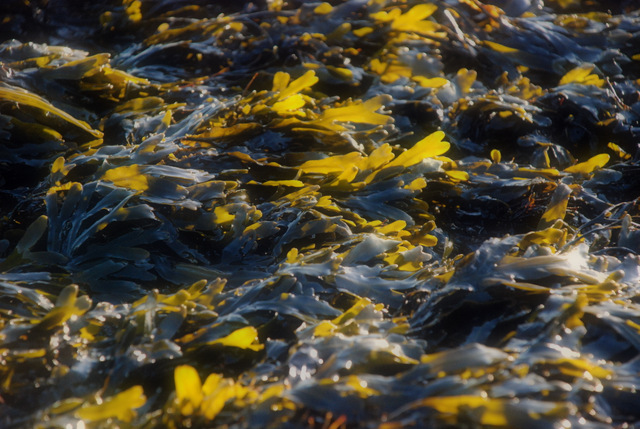Monica is a Dunbar resident with a problem on her doorstep
I recently moved near Dunbar’s East Beach – idyllic! The sound of the gulls in the morning, sunset over the water, walking along the beach investigating what the tide had brought in … and a lot of what it brought was kelp, piles of the stuff, a metre long and with the holdfast attached, ripped out by the last storm.
And there I found the fly in the ointment – or, more precisely, the thousands of flies that seem to materialise in a matter of days, attracted to the rotting, stinking seaweed, and plaguing the lives of many of the town’s residents, not to mention seriously damaging the appeal of one of the town’s natural assets.
 After talking to other members of the Dunbar Shore and Harbour Group, it transpired that this fresh potassium and sugar-rich organic product, long used by Scottish farmers to fertilise their crops, was for the most part being treated as “waste” and carted off to landfill.
After talking to other members of the Dunbar Shore and Harbour Group, it transpired that this fresh potassium and sugar-rich organic product, long used by Scottish farmers to fertilise their crops, was for the most part being treated as “waste” and carted off to landfill.
Surely there is a better solution – not just eco-friendly – but possibly also much more productive?
A bit of research brought up several possibilities:
a) back to basics – could we not introduce a new generation of farmers to the benefits of seaweed as fertiliser, perhaps in conjunction with help in terms of its collection, storage and delivery?
b) wacky but wonderful – A rare breed of sheep, the North Ronaldsay, which is native to Orkney, is prized for its wool and its lean meat – and it feeds primarily on kelp! A herd of these sheep might well hoover up enough seaweed in a year to sort out not only the East Beach but neighbouring areas, and perhaps facilitate, on the side, a little cottage industry with tourism potential?
c) visionary – with the right technology, our annual seaweed yield, currently viewed as an annoying and polluting waste product which costs the council thousands of pounds a year to dispose of, could provide heating for 20 homes in Dunbar. And that’s just the East Beach yield – if we add in neighbouring areas, perhaps Torness, or even add in High Street food waste, food waste from Asda, and compostable farm waste – could we heat the whole town? And, as a final fringe benefit – the leftover waste from this process could still be used as fertiliser.
Perhaps it’s time to look at beachcast not as the waste nuisance it currently is, but for what it could be – an organic gift from the sea.
Monica Menis
